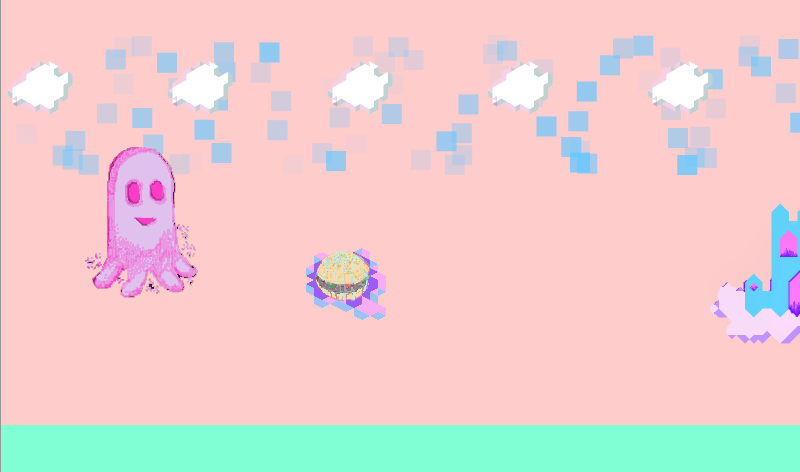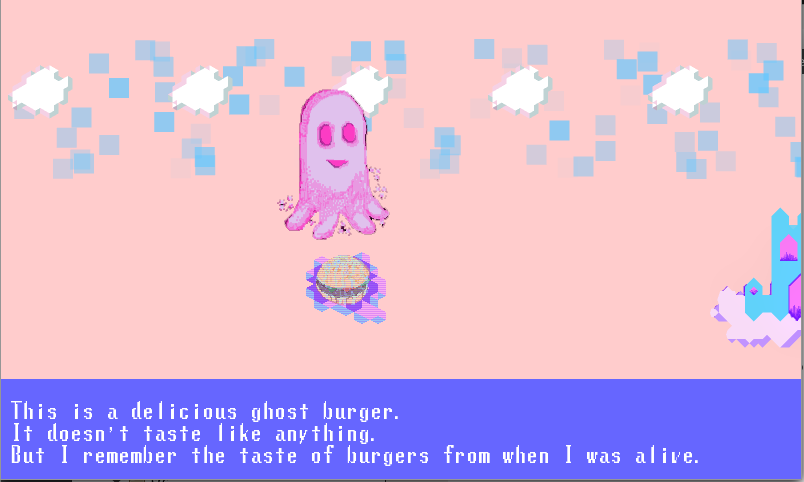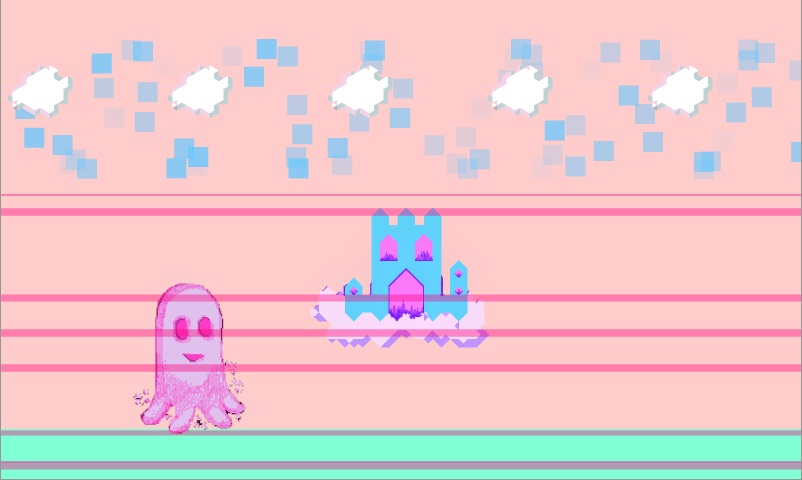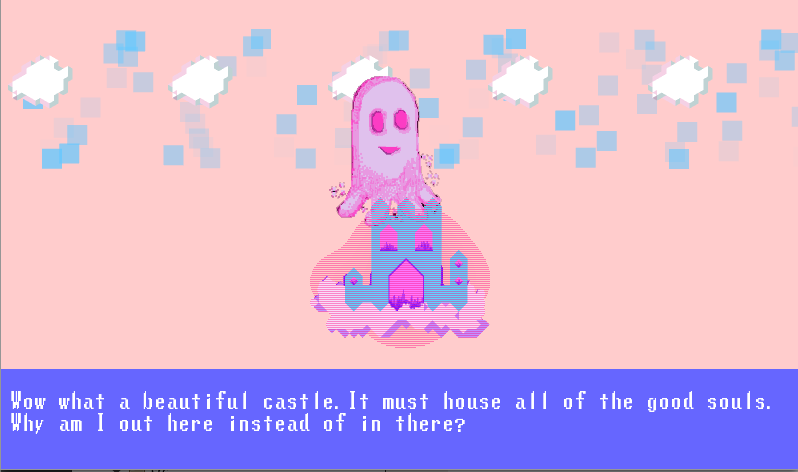Ghostboi in the Land of the Dead
By Julia Makivic
"Ghostboi in the Land of the Dead" is a short, retro-style text adventure game about a ghost that wanders through the afterlife and contemplates his reason for being there. The player controls the ghost using a joystick, while the game appears on a small screen.
Below is a video and screenshots from the game.

As the user moves Ghostboi with the joystick, Ghostboi runs into objects and a textbox appears, showcasing Ghostbois's thoughts. The game consists of four different scenes where Ghostboi wanders past a castle for good souls, a castle for bad souls and a type of limbo space full of meandering, confused souls. Although the ghost characters, castles and other bits of scenery are drawn by me, the animations are generated in openFrameworks and the pixel data in the images are also altered in openFrameworks. For example, when Ghostboi intersects an object such as the burger in the first image, the pixels of the burger are changed. The movement of the background scenery and of the characters and the text is also all generated in openFrameworks.
The joystick is connected to an Arduino which communicates the direction of the joystick via serial connection to openFrameworks. Ghostboi moves on the screen according to the data received from the serial input.
I wanted to create a small, arcade-style game, therefore the joystick and the screen needed to be contained in some type of case. In order to do this, I chose to run the entire game on a raspberry pi, a machine small enough to keep in a plastic enclosure.
The visual design and story of Ghostboi was largely inspired by illustrators such as Junko Mizuno and McBess who have a very cartoonish style that is integrated with creepy and dark elements. The cartoonish images often require a second glance if the viewer is to understand what they are truly about. I wanted my game to have a similar feeling, to be filled with soft pink and pastel colors while inserting Ghostboi's existential questions.
In addition to having the content on the screen have adhere to these values, I also wanted to have these design values reflected in the design of the case. Below is a concept design of what I would like the case to look like.


Ideally the case would serve as a narrative tool in addition to the content on the screen and would change according to behaviors in the game. I also wanted the case to have the same creepy yet pastel feeling as the visuals in the game. This is a concept I would like to pursue later on. Below is an image of what the case looks like now. Although it sparse compared to the concept design, it mirrors the same feeling as the visuals of the game.


Overall, I am very pleased with how this game turned out. I am quite passionate about this project and would like to keep working on it in the future. Although there are many ways in which this project could be improved, I believe it provides a strong base for further exploration.
Right now, Ghostboi has to intersect with objects in order for text to appear. In the future, I would like to develop more obstacles and introduce more puzzle-like elements that would enhance the game-like feeling. I would also like to activate all four corners of the screen. Right now all of the action involves moving the ghost forward. However, I would like to scatter more elements throughout the screen in order to enhance the feeling of exploration. I would also like to embellish the case much further. I want to introduce more physical computing elements that communicate with openFrameworks and change the surface of the case in accordance with what is happening in the game. And finally, I would like to introduce sound and have the sound be affected by the game play.




































































